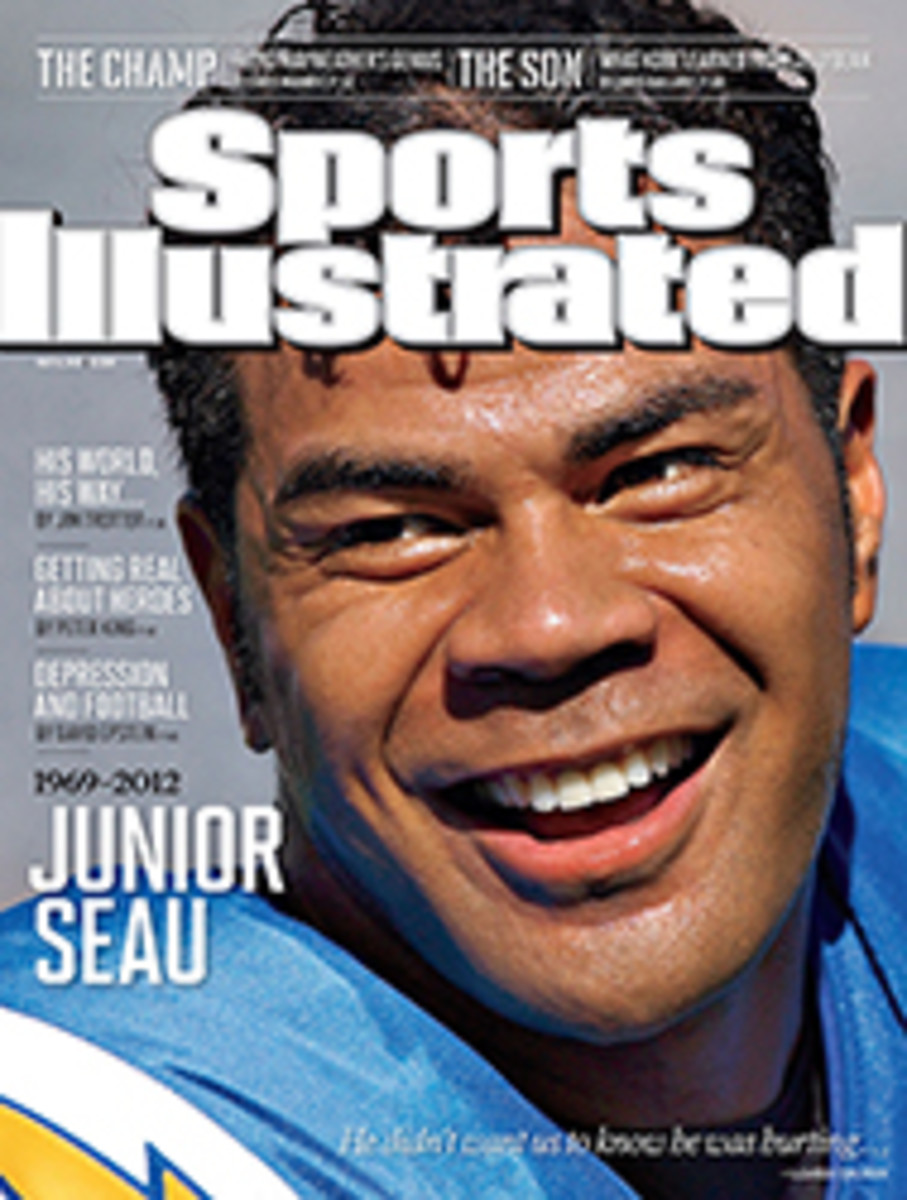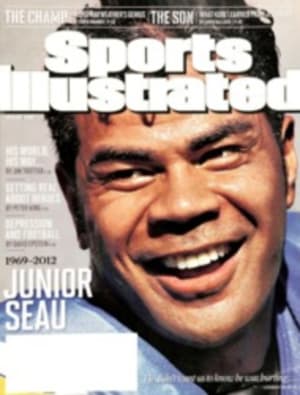
The Toughest Question of All
Senior writer Jim Trotter met Junior Seau when he walked into the Chargers' locker room as a beat reporter for the first time in 1995. "So you're the new guy," the 6'3", 250-pound All-Pro linebacker said, calling him over with a spreading grin. "If you need anything you call me.... "
Trotter took Seau's number, wondering if he were being set up for a prank, like if he called the number and it turned out to be Domino's Pizza. But weeks later when he finally tried Seau's cell, a relationship began that helped Trotter navigate not just the bouncy dynamics of the San Diego locker room but also the complicated interplay of the entire NFL. "He became a friend and a mentor," says Trotter, who writes about Seau's final days in Oceanside, Calif. (page 38). "And when he was gone, we seemed to know about it all at once because of how beloved he was. That's why the news spread so fast."
Senior writer Peter King was at the corner of 55th Street and Second Avenue in Manhattan when he noticed his phone was blinking. He missed the call but went to Twitter, where he saw the news that Seau had shot himself to death, and his antenna went up. "A healthy, successful 43-year-old man kills himself?" asks King. "I immediately thought about the two decades of physical abuse Junior took playing big-time college and NFL football." King's second thought was to wonder whether the media's praise for Seau's insistence on playing through pain might have played a part in his suicide (page 42): "Superman never asks for help."
Senior writer Phil Taylor found out on Twitter too, and later that day at the gym his friends were debating a question that seems more urgent with every news break: Would you let your kids play football? Taylor, who played the game himself in high school and knows well "the pride of having a son who plays football," had his topic for this week's POINT AFTER (page 68). Senior writer David Epstein, SI's lead writer on concussions and sports science, realized the news would spread rapidly among former players "because Junior had been so visible and obviously so together until very recently." Epstein immediately began making calls to report for a piece that pulls together current research on brain trauma and its still-debated links to depression in football players (page 46).
Injury has been part of the game's fabric since before there were the positions of linebacker and receiver. Teddy Roosevelt loved the character-building qualities of football; he recruited players for his Rough Riders. And yet he saw that the only way for the game to proceed was with less violence. In 1905 Roosevelt gathered representatives from the top football schools—Harvard, Princeton and Yale—and told them that they needed to stem the surge of on-field deaths. (There would be 18 that year alone.) From that meeting came the forward pass, among other rule changes. Today the changes will come from the collaboration of scientists and the players and officials who make football work. It is no longer enough to wait for players to die to look at their brains. New technologies, including advanced MRI techniques, can be used to study the damage in real time.
This is real time.
FOLLOW @SI_TMcDonell
PHOTO
MEL LEVINE (MCDONELL)
PHOTO
COURTESY OF JIM TROTTER (SEAU)
AMIGOS Seau (left) and Trotter started in the Chargers' locker room.

